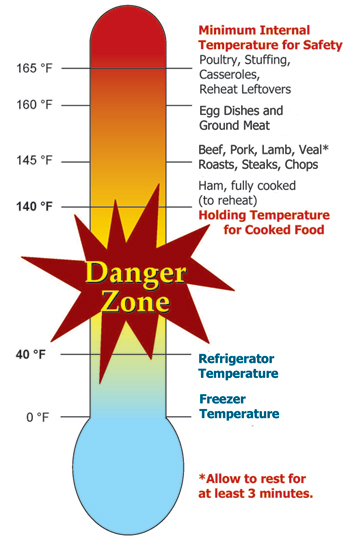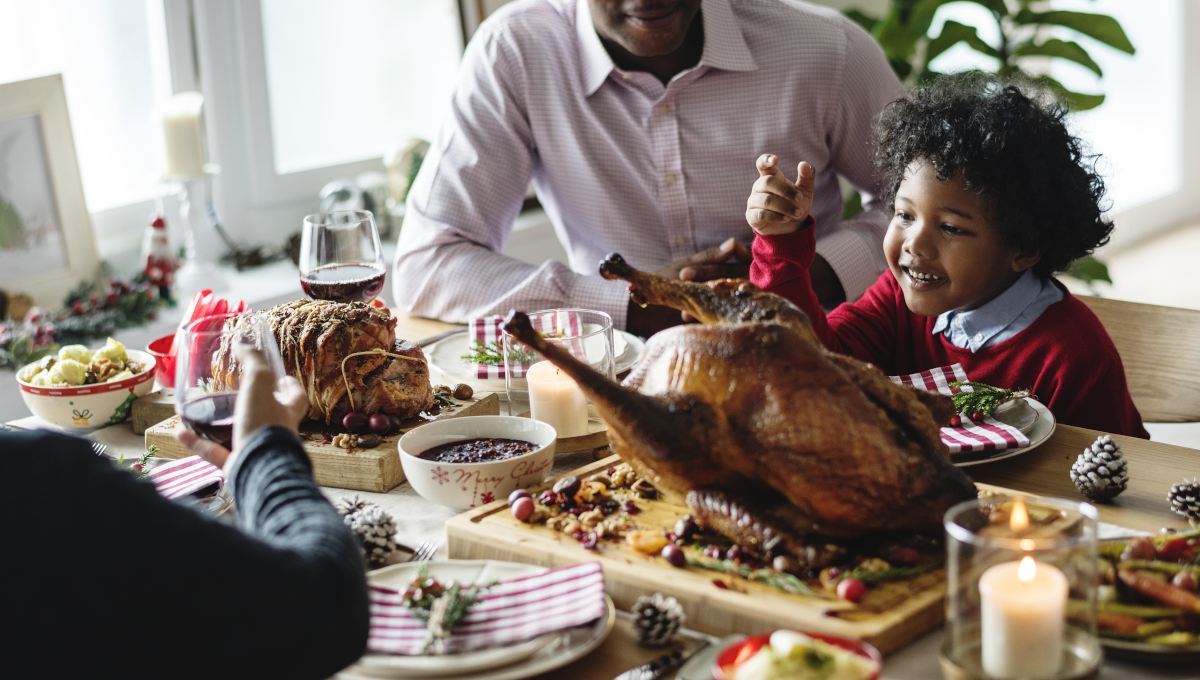Multiple cooks, meals, desserts and people running in and out of the kitchen can make the holidays chaotic. But nothing can add to all that chaos, like food poisoning. Luckily, there are a few rules to help avoid a food poisoning nightmare before Christmas.
Here are four simple rules to keep your family safe this holiday season — clean, separate, cook and chill.

“Clean” reminds consumers to wash their hands and kitchen surfaces often during cooking. “Separate” prevents cross-contamination by encouraging consumers to keep their raw meats away from other foods. “Cook” informs consumers of the necessity of cooking their meat, poultry, fish and egg products to the right internal temperature. “Chill” highlights the importance of prompt refrigeration of food. Focusing on those behaviors provides consumers with clear steps they can take to protect themselves and their families from food poisoning.
Are you a Christmas ham or turkey family?
Ham cooking safety tips from the USDA:

- Both whole or half, cooked, vacuum-packaged hams packaged in federally inspected plants and canned hams can be eaten cold, right out of the package.
- If you want to reheat these cooked hams, set the oven no lower than 325 degrees F and heat the meat to an internal temperature of 140 degrees F as measured with a food thermometer.
- Unpackaged, cooked ham is potentially contaminated with pathogens. For cooked hams that have been repackaged in any other location outside the processing plant or for leftover cooked ham, heat to 165 degrees F.
- Spiral-cut cooked hams are also safe to eat cold, if they have been held at proper temperatures. These hams are best served cold because heating sliced whole or half hams can dry out the meat and cause the glaze to melt and run off the meat. If reheating is desired, hams that were packaged in processing plants under USDA inspection must be heated to 140 degrees F as measured with a food thermometer (165 degrees F for leftover spiral-cut hams or ham that has been repackaged in any other location outside the plant). To reheat a spiral-sliced ham in a conventional oven, cover the entire ham, or individual portions, with heavy aluminum foil and heat at 325 degrees F for about 10 minutes per pound. Individual slices may also be warmed in a skillet or microwave, but must reach 165 degrees F.
- Cook-before-eating hams or fresh hams must reach 145 degrees F (with a 3-minute rest time) to be safely cooked before serving. Cook in an oven set no lower than 325 degrees F. Hams can also be safely cooked in a microwave oven, other countertop appliances, and on the stove. Consult a cookbook for specific methods and timing.
- Country hams can be soaked for 4 to 12 hours or longer in the refrigerator to reduce the salt content before cooking. Then they can be cooked by boiling or baking. Follow the manufacturer’s cooking instructions.
Turkey cooking safety tips from the USDA:
Thaw the turkey safely

Perishable foods should never be thawed on the counter, at room temperature or in hot water. They must not be left at room temperature for more than two hours. There are safe ways to thaw a turkey and other food, including in the refrigerator, in cold water and in the microwave.
Even though the center of the food may still be frozen as it thaws on the counter, the outer layer of the food can easily be in the “Danger Zone,” between 40 degrees F and 140 degrees F. The danger zone allows potentially deadly bacteria to multiply rapidly.
Remove the giblets from the turkey cavities after thawing and cook them separately.
Thoroughly cook your turkey
- Use a meat thermometer to determine when the turkey is done. The turkey is done when the thermometer reaches 165 degrees Fahrenheit.
- Insert the thermometer in the thickest part of the turkey thigh. Be aware dark meat takes longer to cook than any other part.
- Basting the turkey while it is cooking is not necessary. Basting tools could be sources of bacterial contamination if dipped into uncooked or undercooked poultry juices and then allowed to sit at room temperature for later basting. Washing tools between bastings can help reduce pathogens.
- Do not cook a turkey overnight in an oven set at a low temperature. Cooking a turkey at a temperature below 325 degrees Fahrenheit allows harmful bacteria to multiply.
- If you purchase a fully cooked turkey, pick it up hot and take it home to eat immediately or refrigerate it.
Holiday specials
- If your eggnog is egg-based make sure to cook the base to a minimum safe temperature of 160 degrees F. Adding alcohol does not make eggnog safe for consumption.
- “Tiger meat” or “cannibal sandwiches” are a winter holiday dish common in the upper Midwest as well as other parts of the country. It contains raw ground meat, usually beef, seasoned with spices and onion and sometimes raw eggs, and served on bread or a cracker. Hundreds are sickened every year from eating this dish. Never eat raw meat. Both ground beef and raw eggs pose health hazards when eaten undercooked or raw. A safe alternative is to mix ground beef with spices and onion and cook it to a safe 160 degrees F.
- When baking this holiday season do not eat raw dough if it contains eggs or unbaked flour.
(To sign up for a free subscription to Food Safety News, click here)

